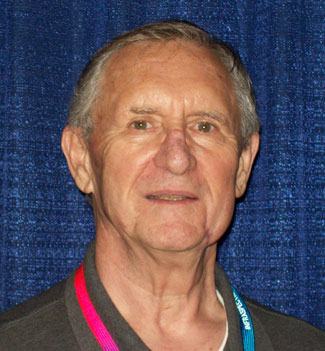G. Raymond Peacock
Publisher & Editor
Measurement Media Network Division
Temperatures.com, Inc.
Southampton, PA 18966
Ph: 215-325-1450Twitter: MrPyrometer
Linkedin: raypeacock
Abstract
Today, it is more important for small businesses to have a website than it is to advertise in the Yellow Pages!
Why? Because most people check the Web before looking just about anywhere else. More simply, if you are not on the Web, it’s like you do not exist. There is a simple, low-cost way for even one-person businesses to get online quickly and have a smart looking, functional website that you can run and grow by yourself, if resources are limited. This article will share some of the ways one can a start a website and grow it efficiently themselves.
There are seemingly endless ways to make it bigger and better, but the first step is the most difficult for some to take and it is a lot easier than you could ever imagine. Plus, there are countless free resources on the Web to help you grow traffic and get your business truly working for you ONLINE! Once you are up and running, you must maintain your site, collect information about prospects, and grow traffic. Those tasks are essential but, like starting a website, they can be handled in a straightforward fashion. It requires some discipline, but not a lot of time if you have a plan and know a few key facts.
Introduction
If you are looking for a product or service, where do you look first? The Web, of course, just like everyone else these days.
Internet Marketing guru, David Meerman Scott (http://www.davidmeermanscott.com/), speaks to this fact. His work has altered the opinions of many in the traditional marketing world as to how people find and buy products and services on the Web.
So, it is very easy to understand that if you do not have a website for your business, you effectively do not exist for the majority of your prospective clients or customers.
A simple website with just a summary of your offerings and contact information is a minimum requirement, but that’s a style some call a “Catalog” or a “Static” website.
An attractive and active website utilizing “Dynamic” methods, like Content Management Systems (CMS) can do much more for you, such as getting a higher ranking position in Search Engine (SE) results for important keywords.
You don’t need to spend thousands of dollars to get started; it is a lot easier and less expensive than you would expect. You can start a low cost website on many online sources. You can even start one free on blogging sites like Blogger.com and WordPress.org.

The Web has changed over the past few years and continues to do so. It’s clear that Social media and mobile smartphone technology are taking the Web to new heights.
One cannot expect to meet the needs of modern technology with an old-fashioned, simple catalog website. That’s just the beginning.
Today, a modern website can do many more things, like provide content to your Social Media pages, send out your published news or app stories, images, etc. via an RSS Newsfeed. If you wish to build a reputation for honestly and knowledge, news and app stories are great ways to do it.
My Website Experience
I began building websites in 1997 (www.Temperatures.com). Added a Content Management Systems (CMS)* website in 2001 (www.TempSensor.net) and began my first WordPress site in 2008 (www.TempSensorNEWS.com).
Now I have developed and maintain more than a dozen WordPress Websites, most for my own business, some for family members, and, three pro bono sites for professional / social organizations.
However, the options available free and at reasonable costs from the WordPress Community make it a hands-down best choice, in my opinion, for any website, especially starting a new one.
It basically has the built-in features that enable you to start an as modern, dynamic website with every bell & whistle as you can imagine. It’s highly extensible, remarkably flexible and, most importantly, very secure.
You can start a very attractive website with a built in blog, search engine, RSS newsfeed, great Search Engine Optimization (SEO) features and current web security that is automatically updated regularly that you or your office staff can maintain frequently at a remarkably low cost: How about FREE?
The cost to get started with WordPress can be less than $50 per year to add a web domain name. It’s even less if you already have one.
Using free WordPress software, you can have a very low cost, working site in a matter of minutes.
But I am getting ahead of the story of creating and maintaining a simple, efficient low- cost website for your business.
WordPress is the largest website community with more than 75 million sites using the software. They range from tiny kid blogs to the Fluke website at http://www.thermal- imaging-blog.com/, and way beyond.
*Content Management Systems have most of the website content stored in database tables. They create a webpage upon demand from those tables according to the software and its configuration. They enable, among other things, a clear separation between content and its appearance on a display.
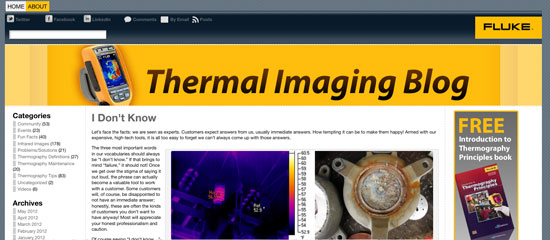
WordPress has two faces, WordPress.org and WordPress.org.
WordPress.com is run by Automattic, Inc., a developer of Open Source Software, notably the software WordPress it supplies free to the Open Source Foundation that runs the WordPress.org website.

It provides free websites in minutes, plus it regularly updates the software it runs and supplies, to keep pace with new technologies, responses to user inputs and to fight off the inevitable attempts by spammers and hackers to disrupt it.
WordPress.org, provides their latest website software and many more themes plus hundreds of Plugin software modules to enrich, speed up and fight off “varmints”. All these capabilities are free.
There is, in addition, a lively community offering “Premium” (Paid) themes and Plugins to do many more things better and/or faster, such as having a dues-paying membership website, or an eCommerce shopping website, or even a forum or Bulletin Board or even an automated site scraping content and Web Directory links from other sources on the Web.
A Simple WordPress Website
A simple website with a web address like UltimateThermographer.wordpress.com can be created in a few minutes by visiting http://wordpress.org and “Getting Started”.

They will even sell you a new domain name that you can use for about $13 per year. But to use it as say UltimateThermographer.com costs another $6 per year.
Once you start with an ungainly name compounded with the wordpress.com name (you can always add the nice-looking one later) you can select a free or paid “Theme” for your site.
You can customize the theme using the setup options behind the scenes in the administration area of the website called the Dashboard.
If these terms seem foreign or difficult to understand, realize please that WordPress doesn’t leave you on your own. It, and the community involved have a huge number of online help pages plus many built in and support documents and tutorials online both in print and as videos, in several varieties of technical simplicity and…depth.
In addition, lots of free, and many paid training websites, offer “How To” training classes online and offline to help you master the details of the many themes, functions and features of the core WordPress.
WordPress’ CMS “Bones”
WordPress, like almost all CMS programs, is composed of two distinct parts. One is the organization and administration or core program; the second is the database that contains the content.
WordPress software consists of the core, or basic, software with the Theme that has been chosen to provide its appearance and augmented by additional, modular software extensions called “Plugins” that add extra functions to the core program.
The WordPress.org community has developed some thousands of different themes and almost an almost equal quantity of Plugins.
However, in the free WordPress.com hosted websites, extra plugin features are not enabled and the number of themes available are limited, but still quite extensive – about 200 or more as of December 2012.
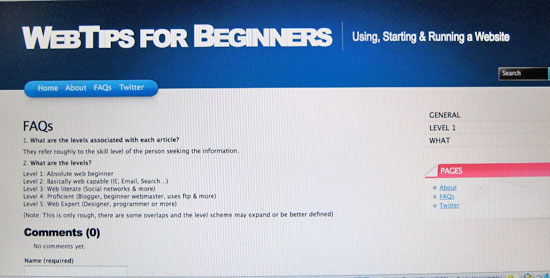
Many themes are highly customizable with your own logo and/or color scheme. Even some Premium Themes are offered these days.
Thus, the look and style of the website can be easily changed without affecting the detailed and valuable content.
Within the website’s body, there can be one or more vertical columns, often one or two on the edges, called “sidebars”. The sidebars are populated via user selectable features called “widgets”, the latter including a broad range of features, most with their own options. They can usually be placed as the user prefers but often include items like a Search input box near the top of a sidebar and a guest login and registering menu next, and so on.
The example above has a narrow sidebar on the right, but the top of the column uses a widget called “Categories”.
The Least Expensive Most Secure WordPress Website
The least expensive site with your own domain name can be easily configured into a professional looking one in relatively short order either by yourself, or if you’re willing to expend a bit more, a WordPress Consultant.
There are many around, just contact the local WordPress Group; they are in most major cities in the USA and, of course, online. For a reasonable amount, consultants can configure your site at a cost of between $80 and $100 per hour and do it in a few hours or less, if you are not confident.
But don’t run too fast to an outsider. It can be a straightforward exercise. The learning curve is low and quick.
Before long even a newbie can create a very respectable and professional website.
Your WordPress.com website will initially have a web address (Domain Name) of something like “UltimateThermographer.wordpress.com”. In fact, that’s the sort of name you get at first, except it is your pick for the prefix to .wordpress.com.
You’ll probably want something more like “UltimateThermographer.com”. That’s readily available (not necessarily that exact name, but one more descriptive of your organization / products / services).
You must “Rent” a Domain Name from a Domain Namer Registrar, like GoDaddy.com.
WordPress.com will act as registrar for you for a small fee. They will even take the step of setting up the Nameserver∗ and mapping the purchased name to your initial setup name. They’ll do all of that for about $18 a year.
If you already have a Domain Name from a Registrar like GoDaddy.com, you can “point” it at the IP address for your new WordPress.com website content, by entering the Nameserver* information that WordPress will supply you when you purchase their domain name mapping service for $13 a year.
Next you pick your theme, add your content and images – even from an existing, static site and you have a 3 gigabyte, modern website that is among the most secure on the Web. The whole thing can take less than a few hours.
*A Nameserver is a web infrastructure computer that translates your Domain name into the actual, numerical Internet Protocol (IP) address of the computer upon which holds your website.
Website Security Issues
As you know there are many “Unfriendlies” on the Web and plenty of thieves making Weblife miserable for the other 99.9% of us. CMS websites, especially ones like WordPress sites are among the most vulnerable, for an obvious reason – there are 75 million of them.
In my 11 years using CMS sites, I have experienced just about every kind of hacker, spammer, script kiddie, and nasty stuff one can see. I have even had sites totally wrecked. But, WordPress.com has a great record of reliability and security; one of the best, if not the best.
One of the weak points is the login. By default, the Administrator of a WordPress Website has the login name of “admin”. I hope they fix that, because, every site wrecker wants to get in by just trying trick after trick to gain the login password, or cause the site to “burp” with some telltale output from an unexpected input on the admin login.
One of the key security items a user can do, is create another user name for an administrator, and change the permissions for any “admin” login to the lowest level of authorized use, like “Subscriber”.
A second useful feature, is built into WordPress.com sites. They automatically limit login attempts and will ban more than 3 or 4 unsuccessful ones in a row. That way, software robots are thwarted from trying to hack their way in through the login screen.
WordPress.com goes a lot further with their “Askimet” watchdog that bans the IPs of known spammers and shares those addresses with all the users of WordPress.com and the Askimet Plugin on WordPress.org software.
There are similar safeguards one can take in privately hosted WordPress sites. The Page below shows a recent one from one of my websites where we use a login limiting Plugin that we heard about from a member of the Philadelphia WordPress Group. The IP address has been changed to protect the guilty.
Even today, there are crackers and hackers trying to break into sites via the admin login, as this message tells from one of my sites in December (I get several per day):
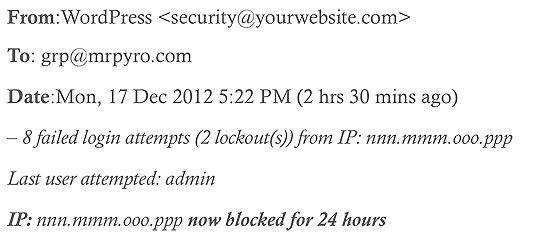
A Privately Hosted WordPress Website
As your experience online grows, you may discover you wish more website capabilities than you have with a WordPress.com site. More size, more features faster page loading, and speed are typical reasons.
You may already want to convert an existing site to WordPress – that’s a bit more than can be addressed here; but there are plenty of resources on the Web to help, if you are serious.
Google says that it gives higher ranking to web pages that load in under 2 seconds! Many people give up on a Web page if it takes more than 6 or 7 seconds to load.
So, if keeping more traffic or getting more traffic from a higher Google and/or Bing rating, you may wish a speedier site.
Hosting your own WordPress website is not very difficult; it just costs a little more. A reputable hosting service company will work with you to help set up a reliable WordPress site.
One can freely download not only the WordPress website software at WordPress.org, but also select among its many free themes and plugins. But more about that once you have a site started because the stand-alone version of WordPress has built in helpers to directly search the WordPress.org database for Themes and Plugins.
Some website hosts even provide an automated installation for WordPress. WordPress itself recommends several hosts like Bluehost.com and Dreamhost.com.
Personally, we have found that Hostgator.com provides remarkably fast website page delivery and has responsive and competent technical support for very reasonable prices.

You want even more there are almost endless options, ranging from WPEngine.com, a super secure WordPress only hosting company with very fast servers who claim to be the best and most secure WordPress hosting service. They start at $29 a month for a single website.
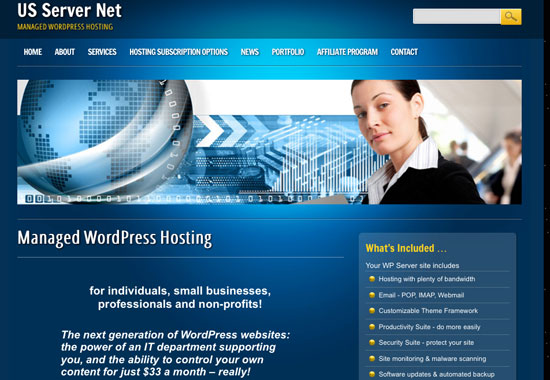
US Server Net (www.servernet.us) has an even more unique approach, they’ll hold your hand, so to speak. Not only do they provide “Managed WP Hosting” with excellent security and malware monitoring, they’ll help train you or your staff to take care of the site better at only $33 a month.
Do You Need More?
There are more helpful resources online than you can imagine. A few years ago one had to look to find “WordPress for Dummies”, but it’s in its Fifth Edition already.
There are tutorials and videos on the WordPress sites. There are WordPress.tv videos of user, developer, and designer talks at the many WordCamps that are being held more regularly around the USA.
WP Academy (www.wpacademy.com) is an online training and educational organization that has been providing training on WordPress to people for more than 5 years.
WordCamps are one of the latest things. FYI, Philadelphia had its second one this past October at Temple University’s Fox School of Business. There are WordPress groups in many cities, some are stand alone, some affiliated with a local Meetup.com organization.
But a talk like this would not be complete without a few general tips on how to make your site grow, to get noticed, and to build traffic. Some are much easier to implement in WordPress.
Add a site map to your site. It’s easy on a hosted site; use a plugin.

First thing, if you are not already listed on the DMOZ.org open directory, you are missing a giant reference source. The major search engines regularly collect the updates from it to guide their website searches and indexing.
Being there is the next best thing to an automatic inclusion in Google’s, Bing’s and Yahoo’s search plans. Remember that Google, and most likely the other major Search Engines like new articles. Once per week is almost a minimum to get more notice from them.
With a WordPress private site, you can add a Plugin that will turn the headline of a new story on your website into a twitter tweet. So, get it and a twitter account to show your tweets. In twitter, follow people who could benefit from your tweets.
Follow me on twitter, I’m called MrPyrometer and my website news on Measurements, Temperature & Moisture Sensors and Thermography appear several times a day.
A fast webpage loading is very important, especially the home page. Enough said earlier.
Get your PR person, maybe it’s you, to be sure that your site is submitted to the major Search Engines (SEs) and Directory listings for the major players, plus the SEs and the Directory sites in your technical specialty.
We, for instance, run several free directories: IRApps.com, www.TempSensor.net and MeasurementDB.com that welcome self-submitted listings. They help us and you because of the feedback nature of the Web.
Check Wikipedia.org in your area of expertise. Add to an article and add a listing on your website if you have more detail or more complete reference list for your comment.
Join Linkedin.com! Join and Infrared Group or two! Subscribe to the news from them and then comment when you think it’s appropriate. You can add your RSS news feed there, too!
Make sure that you spell your website address correctly.
Summary
Today, it is not only important for small businesses to have a website, it’s a real advantage to have a modern one, one with a place for news or information updates, a picture gallery, and a Newsfeed (RSS). Plus, it should be linked to social network websites to help you spread the word about yourself and your products and services.
All this can be achieved relatively easily and at modest cost using WordPress.com’s free websites and buying your own company website Domain Name. A basic, modern site that you could even run yourself would be less than $25 per year.
Options to grow and gain more Web exposure and traffic comes with a privately hosted version of your site. Again, WordPress offers a free website software package even more flexible than a WordPress.com site.

